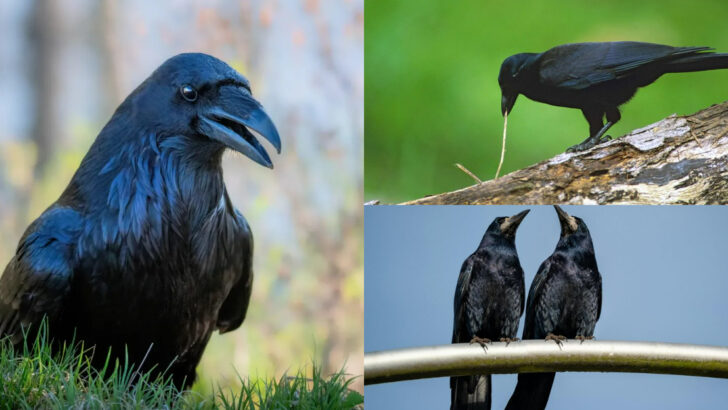Crows and ravens aren’t just birds—they’re feathered masterminds. They recognize faces, solve puzzles, and even hold grudges.
Some have been caught using tools, while others leave gifts for humans who treat them well. These brainy tricksters are rewriting everything we thought we knew about animal intelligence.
Ever seen a bird crack open a nut by dropping it into traffic? Or one that plans for the future like a tiny, winged strategist?
Crows and ravens are full of surprises, and their clever antics will leave you amazed. Get ready to dive into 19 jaw-dropping ways these birds prove they’re among the smartest creatures on Earth!
Tool Usage
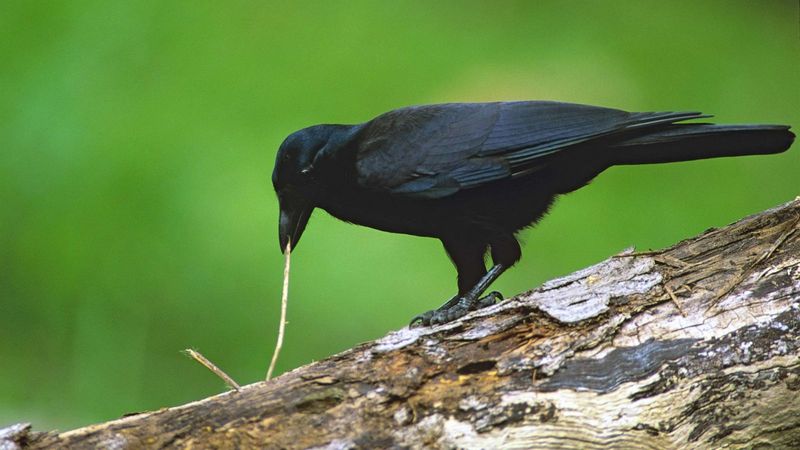
Crows have been observed using tools in the wild, showcasing their impressive problem-solving abilities. These clever birds often use sticks or leaves to extract insects from tight spots, demonstrating an understanding of cause and effect.
This tool usage isn’t just random; crows have been known to modify objects to better suit their needs. This behavior highlights their ability to plan ahead and adapt to their environment, skills that are indicative of high cognitive function.
Such intelligence underlines why crows are admired by scientists and bird enthusiasts alike.
Complex Social Structures
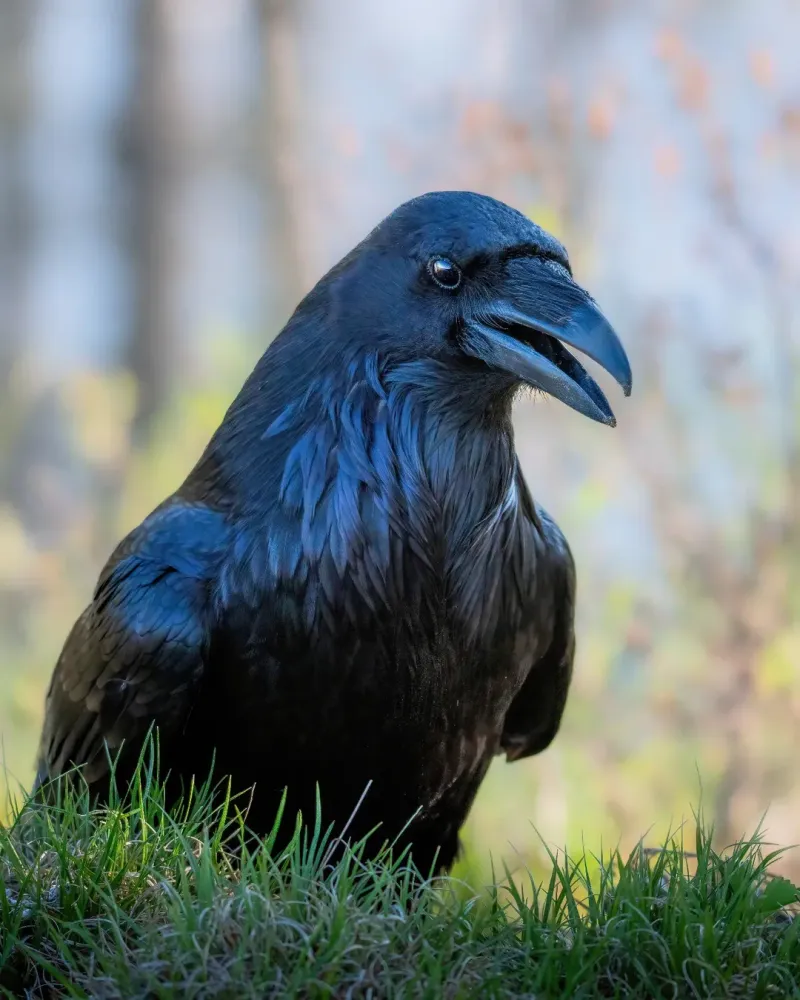
Ravens are known for their intricate social structures, often forming tight-knit groups. These organizations are not just about hierarchy but involve cooperative behaviors like sharing food and defending territory.
Within these groups, ravens communicate with a sophisticated range of vocalizations and gestures, allowing them to coordinate and strategize effectively. This social intelligence aids in their survival, showcasing a level of cooperation and empathy typically seen in more advanced mammals.
Observing these interactions provides a window into the complex social world of ravens.
Mimicking Human Speech
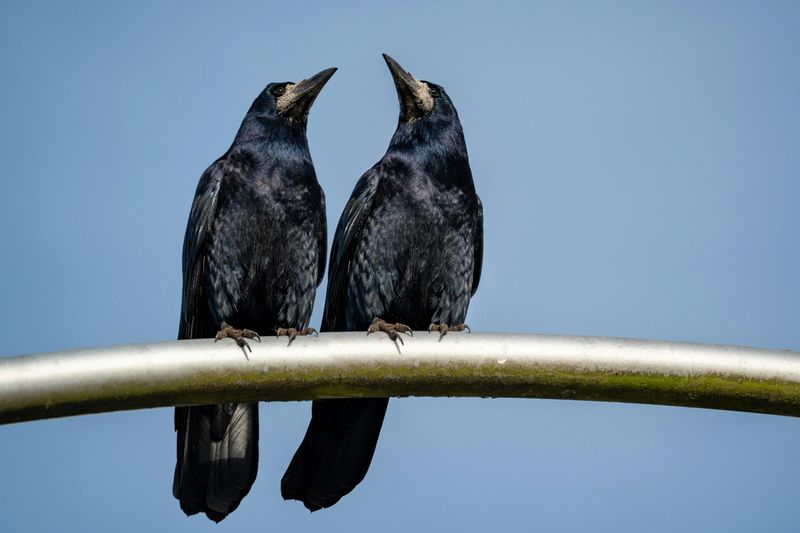
Some ravens are capable of mimicking human speech, an ability that fascinates ornithologists. Unlike parrots, raven speech mimicking is not just about mimicry; these birds can use words contextually.
This talent points to their capacity for learning and understanding, as they often replicate words they hear frequently, especially from humans. This behavior is indicative of their keen observational skills and adaptability to human environments, making them compelling subjects for studies in animal communication.
Their vocal flexibility continues to intrigue researchers globally.
Memory of Faces
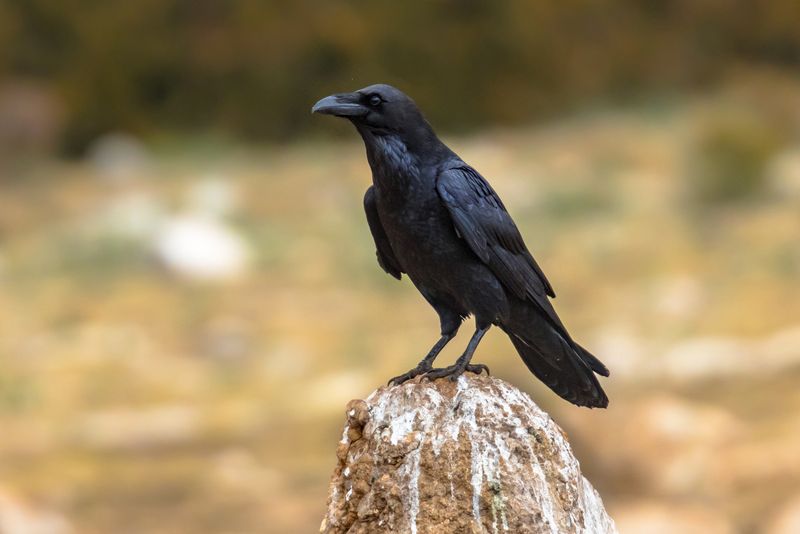
Crows possess an extraordinary memory for human faces, capable of recognizing and remembering individuals who may pose a threat or offer food. This memory is not short-term; studies have shown that crows can recall faces for years.
Such recognition is crucial for their survival, enabling them to avoid danger and bond with friendly humans. This ability to differentiate between people underlines their sophisticated cognitive processes.
By engaging with humans, crows reveal their adaptability and intelligence, underscoring their status as highly perceptive birds.
Understanding Cause and Effect
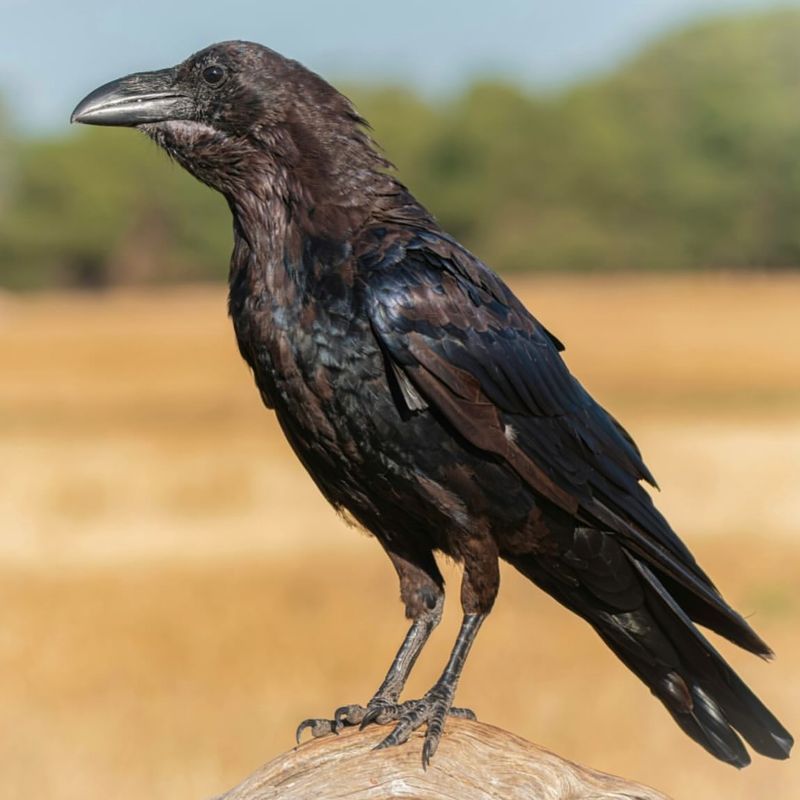
The intelligence of crows is further demonstrated by their understanding of cause and effect. In various experiments, these birds have been seen solving complex puzzles to obtain food, showcasing their ability to engage in sequential reasoning.
This skill requires them to anticipate outcomes and devise strategies, reflecting their advanced problem-solving capabilities. Such experiments have highlighted the crow’s capacity to learn from experience and apply knowledge in new situations, paralleling the cognitive abilities of young children.
Their strategic thinking continues to amaze researchers.
Use of Deception
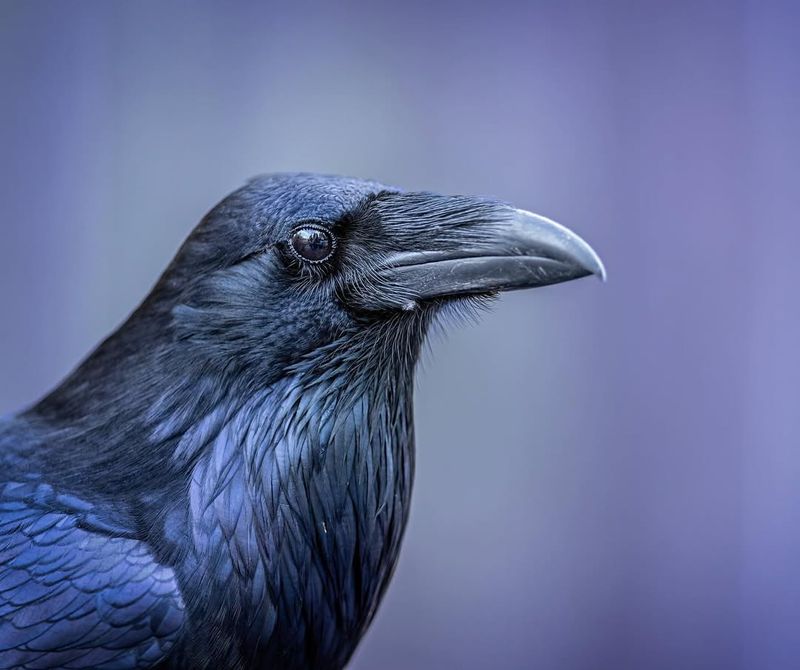
Ravens are not above using deception as a strategic tool to protect resources. When hiding food, they often employ tactics to mislead potential thieves, including humans and other birds.
This involves pretending to stash food in one location while secretly placing it elsewhere. Such behavior indicates a high level of mental acuity, as it requires planning and an understanding of others’ perspectives.
This cunning tactic helps ravens safeguard their resources and survive in competitive environments. Their use of deception highlights their complex cognitive abilities.
Adaptation to Urban Environments
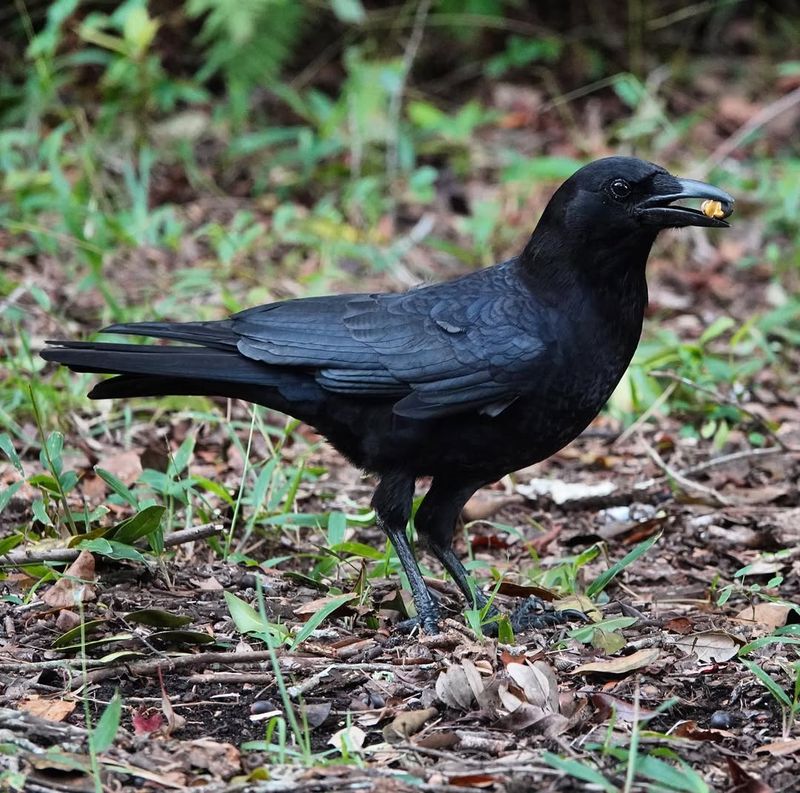
Crows have shown remarkable adaptability to urban settings, thriving in cityscapes that present both challenges and opportunities. These birds have learned to exploit human-generated resources, from scavenging through garbage to timing their crossings at pedestrian lights.
Their ability to navigate and utilize urban environments showcases their flexible problem-solving skills and resilience. This adaptability has not only allowed them to survive but often flourish in cities worldwide.
Their presence in urban areas offers a unique glimpse into their ability to integrate into human-dominated landscapes.
Strategic Cooperation
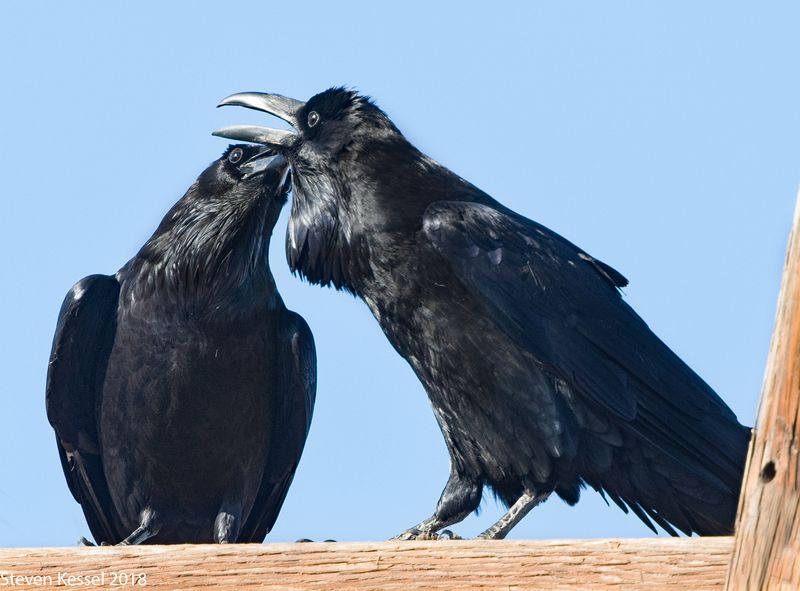
Ravens exemplify strategic cooperation, often working in tandem to achieve common goals. This cooperative behavior is evident in hunting scenarios, where they coordinate tactics to outsmart prey.
Such teamwork requires communication, trust, and an understanding of shared objectives, mirroring social structures found in higher mammals. The ability to collaborate effectively highlights their social intelligence and adaptability.
By observing ravens, researchers gain insights into the evolutionary advantages of cooperation and how it enhances survival prospects in complex environments.
Playful Behavior
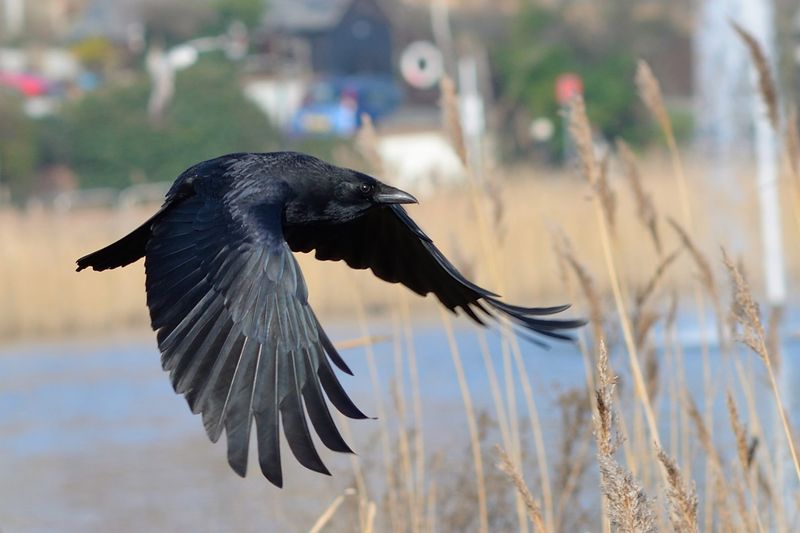
Play is not just a simple pastime for crows; it serves as a developmental tool that enhances their cognitive and social skills. Young crows often engage in playful activities, such as aerial acrobatics and object manipulation, which help them learn about their environment and social dynamics.
This behavior is crucial for developing coordination, problem-solving abilities, and social bonds. The act of play underscores their intelligence by demonstrating their capacity for creativity and learning.
These playful antics are a testament to their lively and curious nature.
Problem Solving in Groups
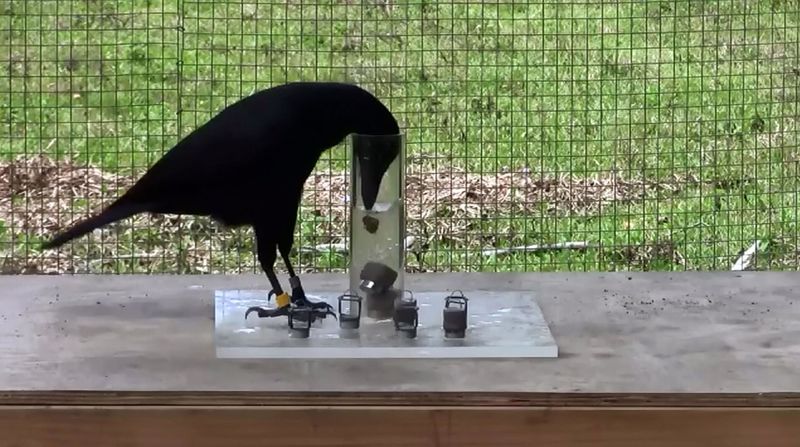
Crows often engage in collaborative problem solving, showcasing their intellectual prowess. These birds are known to band together to tackle challenges, such as accessing food that requires team effort to retrieve.
This group problem-solving ability relies on communication and shared goals, reflecting their sophisticated social intelligence. By working together, crows can achieve what they might struggle to do alone, highlighting the power of cooperation.
Such behavior not only ensures survival but also underscores their position as intelligent and resourceful creatures.
Innovative Nest Building
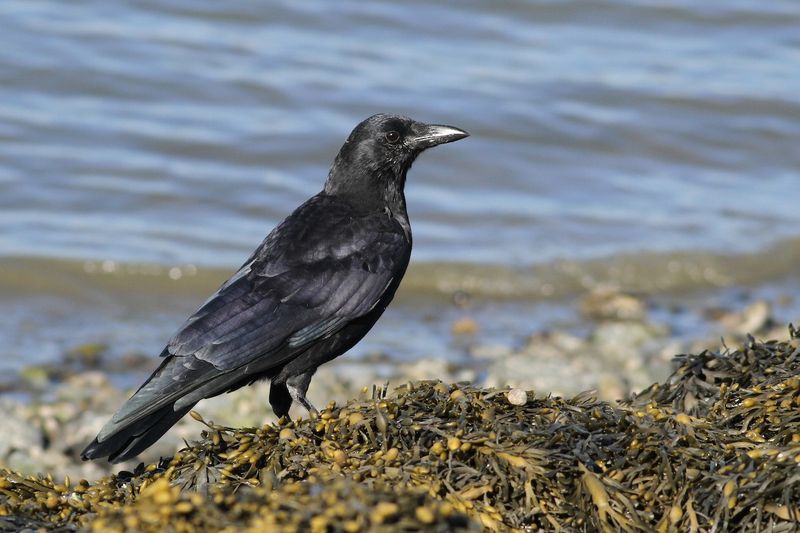
Nest building by ravens goes beyond the mere collection of twigs and leaves. These innovative birds incorporate man-made materials, such as wires and plastic, into their nests, demonstrating adaptability and resourcefulness.
This creative use of available materials not only reflects their problem-solving skills but also their ability to thrive in diverse environments. By innovatively constructing their nests, ravens ensure the safety and comfort of their offspring.
These architectural feats illustrate their intelligence and ability to make the most of their surroundings.
Observational Learning
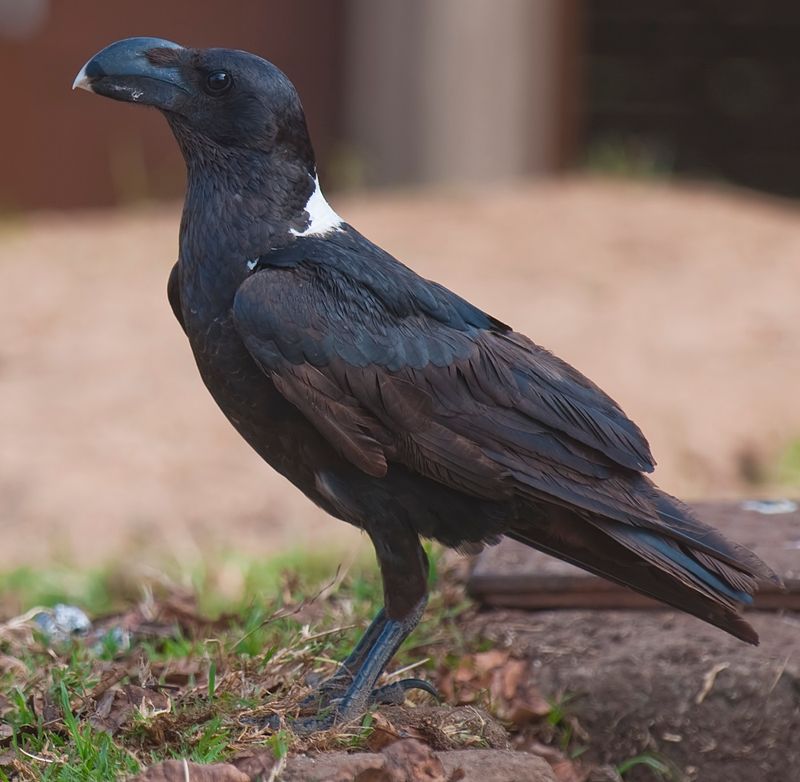
Observational learning is a key component of crow intelligence, enabling them to acquire new skills by watching others. Young crows often observe their elders to learn about food gathering or tool usage, a process that enhances their survival skills.
This learning method reflects their ability to adapt by mimicking successful behaviors rather than relying solely on trial and error. Observational learning highlights their capacity for cognitive flexibility and understanding, which contributes to their reputation as one of the most intelligent bird species.
Understanding Human Cues
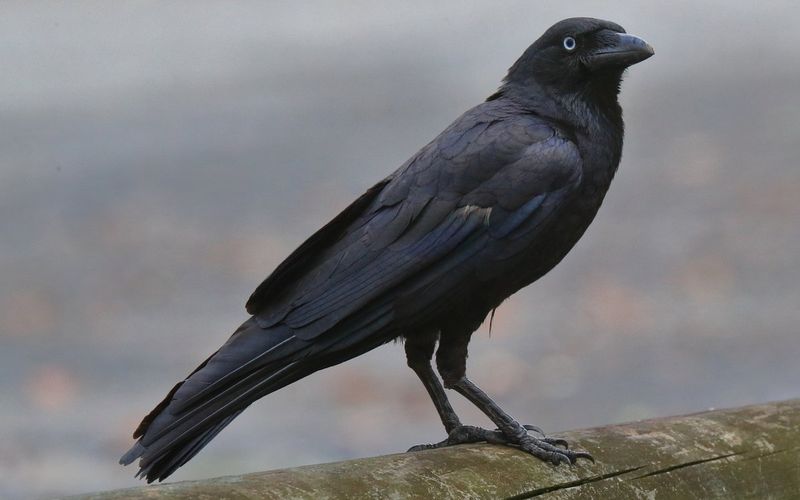
Crows exhibit an impressive understanding of human cues, such as gestures and facial expressions. This ability allows them to interact more effectively with humans, whether it’s responding to a pointed finger indicating food or recognizing friendly intentions.
Such interactions require them to interpret and react appropriately, showcasing their social intelligence. Understanding these cues aids them in navigating human-dominated environments.
This skill demonstrates their adaptability and perceptiveness, qualities that contribute to their success in diverse habitats and their continued fascination to researchers.
Use of Tools for Play

Tool usage in crows isn’t limited to serious tasks like food retrieval; these birds also use tools for play. This behavior, observed in their manipulation of objects for amusement, sheds light on their playful nature and intellectual curiosity.
Engaging in play with tools helps crows develop problem-solving skills and adaptability. This form of play indicates their ability to find joy in learning and experimentation, traits that are often seen in intelligent species.
Their playful tool use underscores the complexity and depth of their cognitive abilities.
Problem Solving with Water Displacement
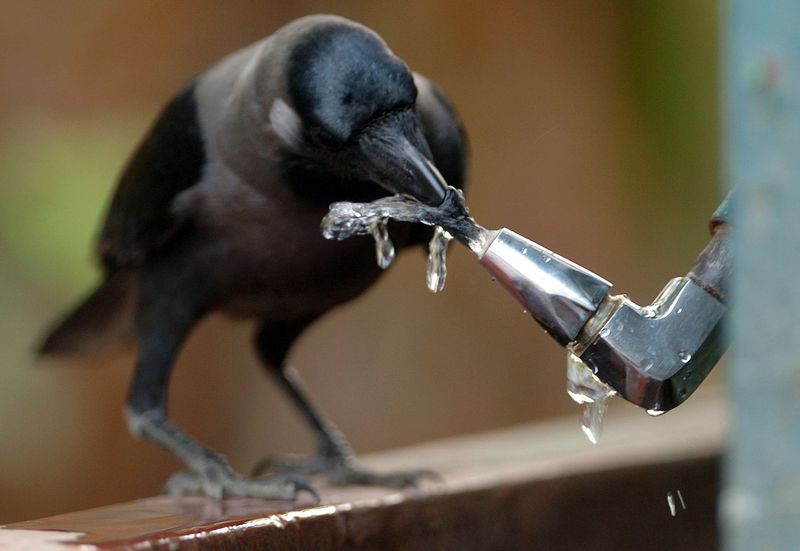
Crows have been observed using water displacement to solve problems, illustrating their understanding of basic physical principles. In experiments, crows place stones into a container to raise the water level and access floating food.
This behavior demonstrates their ability to plan and execute actions based on an understanding of cause and effect. Such problem-solving reflects cognitive processes similar to those in young children, highlighting their capacity for abstract thought.
Their use of water displacement as a tool showcases their innovative approach to challenges.
Communication Through Calls
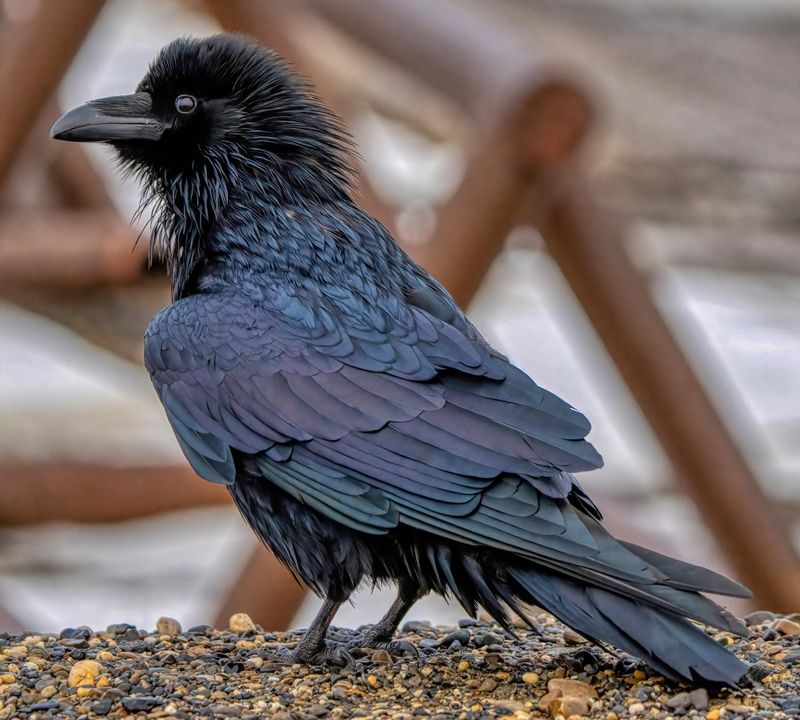
Ravens use a complex system of vocalizations to communicate, employing a wide range of calls to convey different messages. From alerting others to danger to coordinating group activities, their vocal repertoire is extensive and nuanced.
This sophisticated communication system requires an understanding of context and audience, reflecting high cognitive functions. Their ability to convey complex information through calls enhances their social bonds and collective survival.
Observing these interactions provides insight into their social structures and intelligence.
Altruistic Behavior
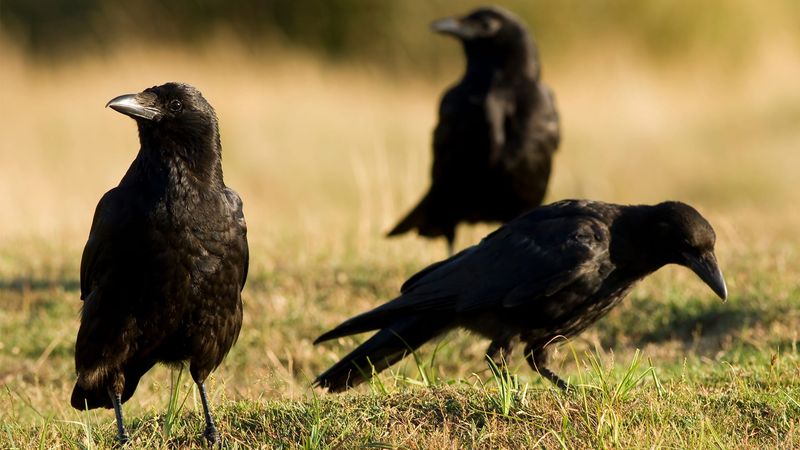
Crows display altruistic behavior, a trait that underscores their advanced social intelligence. These birds have been seen sharing food and resources with others, even those outside their immediate family.
Such generosity suggests a level of empathy and understanding of social relationships, contributing to their strong social bonds. This altruistic behavior enhances group cohesion and survival, illustrating their ability to balance individual and collective needs.
Their capacity for empathy and cooperation highlights the depth of their cognitive and social abilities.
Advanced Problem-Solving Techniques
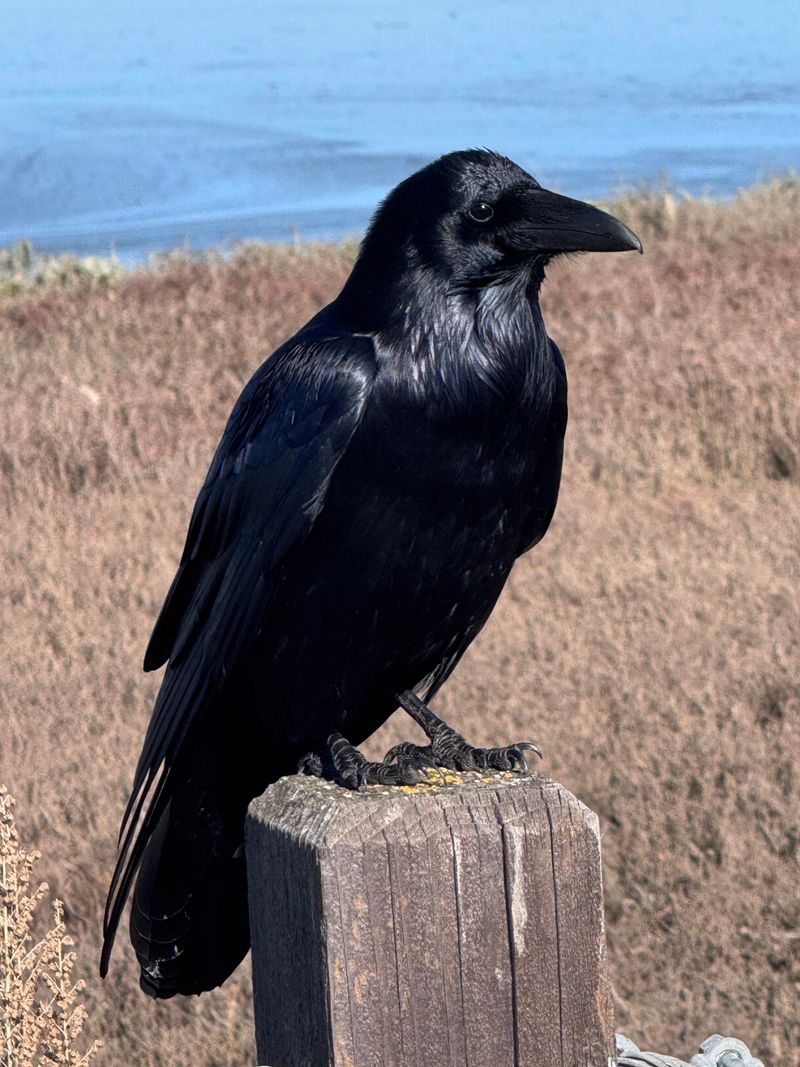
Ravens employ advanced problem-solving techniques that often involve the use of multiple tools in sequence. This ability showcases their capacity for complex thought and planning.
By using one tool to obtain another that solves a problem, ravens demonstrate a level of cognitive sophistication rarely seen in the animal kingdom. These techniques reflect their ability to understand sequences and anticipate outcomes, skills that are indicative of high intelligence.
Their problem-solving acumen continues to captivate and inspire researchers across the globe.
Learning from Human Interaction
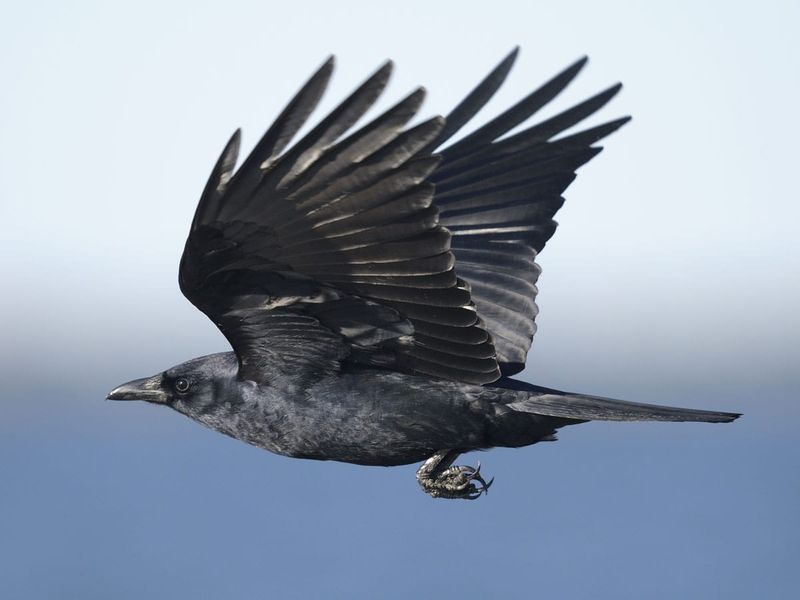
Interaction with humans has taught crows valuable survival skills, enhancing their adaptability in urban environments. These intelligent birds often learn to mimic human behaviors, such as opening trash bins or timing road crossings, to access food and navigate city life.
This learning process underscores their ability to observe, imitate, and innovate based on experiences with humans. By adapting to human influences, crows demonstrate their cognitive flexibility and resilience, enabling them to thrive in diverse settings.
Their interactions with humans offer fascinating insights into their intelligence.

